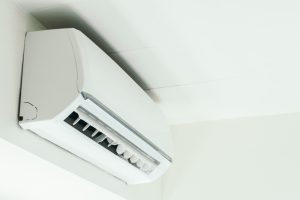What to Consider When Making Your Home Smart

Homes are getting smarter, and brands are embracing the trend with new products designed to keep you connected. In addition to tablets and computers, we are now seeing smart functional items such as doors, fridges, speakers, lights, fans, and heating.
With all this technology entering your home, there are a few things you should consider. Here is what you should know when making your home smarter:
Decide Who is Running the Show
The heart of your smart home will be your voice-controlled, virtual home assistant. The top three smart speakers in the market are Google Home, Amazon Echo, and Apple HomePod. The choice you make will determine which other compatible devices you can use with it.
Google Home has a range of different styles at varying price points and you will be spoiled for choice when it comes to compatible devices and apps. The Amazon Echo utilizes the Bing search engine and works well with music streaming service Spotify. If you have an iPhone and use Siri, the Apple solution could be your top choice.
Think about how and what you want to use in your home before settling on a home assistant.
Managing Multiple Devices
When you are running multiple devices, it can have an effect on your Wifi. To avoid slow connections, keep your router central to your home. Make sure all your applications and settings are up to date, and that your internet can handle the extra load. You should take the time to learn how to check devices connected to WiFi to ensure they are running as they should be. A smart home needs fast WiFi, as turning on a light should be quicker by voice than if you were to get up and flick the switch!
Turn off any devices when not in use, and try to choose those which are compatible, rather than those which may conflict with one another. Do your research before purchasing smart products, as they will generally be more expensive than traditional versions. Look for positive reviews, how often the software is updated, and the ease of use with your virtual home assistant.
Minimizing the Clutter
Electronics come with cords and wires, and this can quickly become an eyesore. To minimize clutter, try to choose devices that have multiple functions. For example, have one portable speaker that can wirelessly connect to your media, or use your phone as the base portal to control the various apps.
Wall mounting smart devices will keep them out of the way and without any obstacles you may even get better coverage.
Don’t Neglect Your Security
The more smart devices you have, the easier it will be for someone to compromise your security. One of the best ways you can keep your devices safe is with a strong WiFi password. Change this regularly, and never leave your network open.
In addition, have separate passwords for each device so that if there is a breach, only one area will be affected. Keep your apps updated, as companies will often have patches to increase both the functionality and security of their systems.
The Last Word
Take your home into the future with smart devices and apps. Start with a virtual assistant and choose products that will work seamlessly as you will be using them on a daily basis. These days, almost anything can be “smart” — from TVs to fans to refrigerators and garage doors! Just remember, it is important to keep your passwords updated and be mindful of security.






